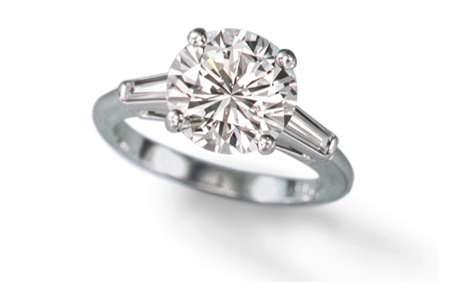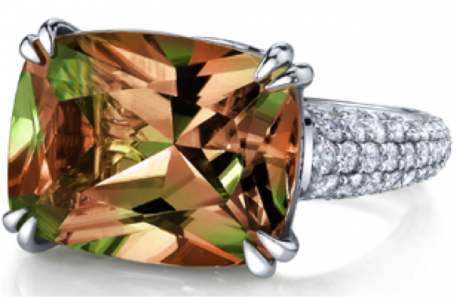Contrary to what many people may think, the word “synthetic” does not mean fake when it comes to gemstones. The term actually comes from the Greek word for “to put together.” People “build” or, more accurately, “grow” synthetic crystals. (more…)

Contrary to what many people may think, the word “synthetic” does not mean fake when it comes to gemstones. The term actually comes from the Greek word for “to put together.” People “build” or, more accurately, “grow” synthetic crystals. (more…)
October babies have the pleasure of enjoying two birthstones to commemorate their birthdays – tourmaline and opal. Last time we wrote about pink tourmaline, and now we’re going to share with you about opal. (more…)

Diamonds are famously known for being one of the hardest substances on earth – we know you’ve heard the rumor that a real diamond can cut glass. But do you know why diamonds are so hard? (more…)
September’s birthstone is one of our favorite gemstones at GIA –sapphire. Sapphires have been long associated with royalty and romance (hence the engagement ring of Prince Charles and Princess Diana, and The Royal Couple – William and Katherine!). (more…)
GIA strives to make sure diamond grading is objective and fair, keeping a standard in the diamond market, so that the public can buy a diamond with a GIA report and know that the report is accurate and absolutely impartial. This creates the ultimate peace of mind for your diamond purchase. (more…)

Zultanite is an extremely rare gemstone used in jewelry design, and was a popular choice at the 2011 Couture conference, which features the most unique, innovative and inventive jewelry design. Famous jewelry designers such as Stephen Webster, Erica Courtney and Rhonda Faber Green all incorporated zultanite into their collections. Zultanite changes color in light, ranging from a kiwi green with flashes of yellow in sunlight conditions to raspberry hues in candlelight. (more…)
When men and women really start looking into diamond grading, a common question is, “Why does the GIA color grade start with a D?” (more…)

Solitaire Setting
Solitaire Setting is a popular diamond engagement ring setting. The head secures the diamond. The prongs allow the diamond to catch the most light. A four-prong setting shows more of the diamond, but a six-prong setting is often more secure. (more…)
Sometimes the search for the perfect diamond grows into something deeper—a lasting interest in the jewelry and gems. If that’s happened to you, discover how GIA can guide your path toward a Graduate Gemologist (G.G.) or Accredited Jewelry Professional (A.J.P.) diploma, courses in gemology and jewelry arts, and a career in the industry. (more…)
Synthetic diamonds are grown in a laboratory and have essentially the same chemical composition and crystal structure as natural diamonds formed millions of years ago. In the last 30 years, gem quality synthetic diamonds have been grown in Japan, South Africa, Russia, Ukraine and the United States. Synthetic diamonds are generally produced using either High Pressure/High Temperature (HPHT) or Chemical Vapor Deposition (CVD). (more…)
When you oooh and ahh over a sparkly diamond, to a large extent you’re reacting to its cut. What you want is light to enter through the crown table (the flat part at the top) and go to the pavilion (the pointy part at the bottom), where it reflects from one side to the other, and then back out of the diamond through the crown table. This ensures maximum sparkle and brilliance. Think spectacular laser show! (more…)
Purchasing a diamond is a big step and finding the right one can be pretty intimidating. However, it doesn’t have to be. Before you make your purchase of a lifetime, make sure to ask the following 5 questions to your jeweler. (more…)
Use of this site signifies your agreement to its terms of use.
© 2002 – 2025 Gemological Institute of America Inc. GIA is a nonprofit 501(c)(3) organization.
All rights reserved.